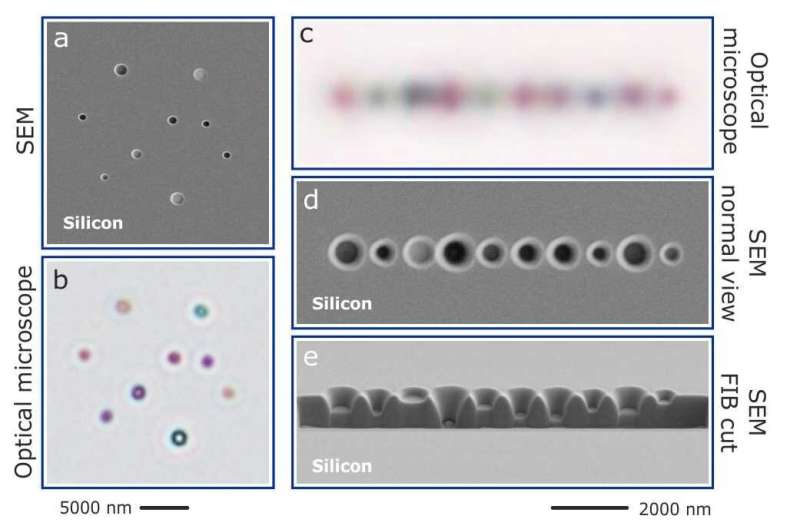This article has been reviewed according to Science X's editorial process and policies. Editors have highlighted the following attributes while ensuring the content's credibility:
fact-checked
peer-reviewed publication
trusted source
proofread
Mie voids could bring about control of light in air

Resonant optical phenomena in metals and dielectrics have profound applications in many fields. The nanoscale confinement allows for unpreceded control of light-matter interaction at surfaces and interfaces, manipulating and controlling the light flow. Resonant phenomena are usually associated with radiative and intrinsic loss channels, which are detrimental in many systems. Metals show strong intrinsic losses. Thus, dielectric systems have recently become the focus of attention as they promise lower loss, higher degrees of flexibility with respect to tuning the interplay of different resonances, and fabrication strategies closer to industrial standards.
In a new paper published in Light: Science & Applications, a team of scientists, led by Professors Harald Giessen and Mario Hentschel from the University of Stuttgart and Professor Yuri Kivshar from the Australian National University, has developed a new technique for dielectric nanophotonics. Their paper, "Dielectric Mie Voids: Confining light in air," will significantly enhance antenna and structure designs.
The optical response of these systems is related chiefly to the study of optical properties of high-index dielectric particles in nanophotonic systems. It is known as Mie theory, which forms universal building blocks for optical metasurfaces. Mie theory is used in the manipulation, routing, and confinement of radiation, and thus triggers the start of the "Mie-tronic" era. However, the confinement takes place inside the high-index materials. Most modal intensity is located inside the material. While this is of less concern in the near- and mid-infrared wavelength ranges, it becomes crucial for wavelength in the visible or even the UV spectral range.
The researchers experimentally implement an elegant and powerful alternative route utilizing high-index materials. Confinement in high-index dielectrics occurs due to a finite reflectance at the interface of the high-index material and air. For solid particles, the mode is localized within the high-index material. While the basic concept has been found earlier, these structures have not been implemented for nanophotonic applications.
The researchers showed that these void modes are predicted by Mie's theory and bear close resemblance with the Mie modes of a high-index sphere. However, they showed subtle but significant differences. The novelty of this work is the experimental implementation of a new building block, which truly adds new functionality to the field. The researchers demonstrate the resonant confinement of UV radiation, observing up to seven higher-order resonant modes in the UV. This remarkable feature is enabled by the confinement of light in the air, rendering the entire modal volume accessible to be used and manipulated. To date, no other resonant nanophotonic building block can perform this task.
Further experimental work in this direction can use other high-index materials, the combination of Mie spheres and voids, and metallic plasmonic systems with dielectric ones. Mie voids are also particularly well-suited for optical sensing and trapping experiments and can utilize chiral structures. Mie voids could also be used in hybrid systems where quantum emitters are coupled to the Mie voids, which act as local nanoantennae. It should work particularly well in the blue and UV range. Mie voids also hold great promise for reprogrammable structures, switching, and active manipulation due to the possibility of filling the mode volume in the void with polymers or dielectrics.
More information: Mario Hentschel et al, Dielectric Mie voids: confining light in air, Light: Science & Applications (2023). DOI: 10.1038/s41377-022-01015-z
Journal information: Light: Science & Applications
Provided by Chinese Academy of Sciences


















